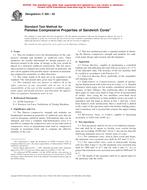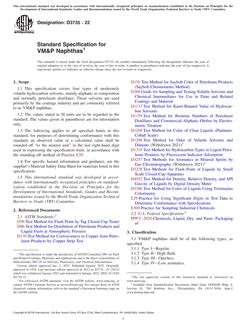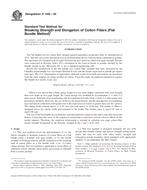1.1 This test method covers the determination of the linear density of all types of yarn in package form, subject to the limitations of size and stretch given in 1.2 and 1.3. Provision is made for expressing yarn linear density in all the traditional yarn numbering systems.
1.2 This test method is applicable to yarns that stretch less than 5 % when tension on the yarn is increased from 0.25 to 0.75 cN/tex [0.25 to 0.75 gf/tex]. By mutual agreement, and use of a lower than specified reeling tension, this method may also be adapted to measure the linear density of yarns that stretch more than 5 %, under the above force.
1.3 This method is applicable to yarns finer than 2000 tex. However, it may be also adapted to coarser yarns by the use of skeins of shorter than specified lengths, and alternate reeling conditions, agreeable to the interested parties.
1.4 Depending on the procedure used to calculate the moisture content of the yarn being tested, and its actual moisture content, or finish content, or both, one or more of the following options may be utilized.
1.4.1 Unscoured Yarn:
Option 1-Yarn at equilibrium with the standard atmosphere for testing textiles.
Option 2-Oven-dried yarn.
Option 3-Oven-dried yarn, plus commercial moisture regain.
1.4.2 Scoured Yarn:
Option 4-Scoured yarn at equilibrium with the standard atmosphere for testing textiles.
Option 5-Oven-dried, scoured yarn.
Option 6-Oven-dried, scoured yarn, plus commercial moisture regain.
Option 7-Oven-dried, scoured yarn, plus commercial allowance (commercial moisture regain, plus an allowance for finish).
1.5 Specimens used to determine yarn linear density may also be used to determine the skein breaking strength of the yarn. Hence, this method provides the sequence of steps to be followed, to determine both these yarn properties.
Note 1 – The linear density of yarns produced with jute, or glass, may also be determined by the following approved methods: Specifications D541, D578, and D681. The linear density of short yarn segments, raveled from fabrics, may be determined by Test Method D1059.
1.6 The values stated in either SI units or inch-pound units are to be regarded separately as standard. The values stated in each system may not be exact equivalents; therefore, each system shall be used independently of the other. Combining values from the two systems may result in non-conformance with the standard.
1.7 This standard does not purport to address all of the safety concerns, if any, associated with its use. It is the responsibility of the user of this standard to establish appropriate safety and health practices and determine the applicability of regulatory limitations prior to use.
Product Details
- Published:
- 07/01/2012
- Number of Pages:
- 9
- File Size:
- 1 file , 120 KB
- Redline File Size:
- 2 files , 220 KB


